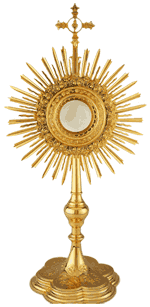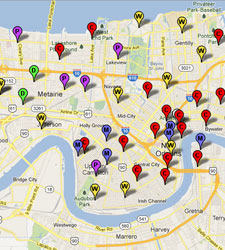The North American Martyrs October 19, 2022
The only reason we know about Jesus Christ is that someone told us. More than likely, that person was our parents, but it could have been a priest, a teacher or even a friend. And the person who told us only knew about Jesus because someone had told him or her. And someone told that person, too. And so on. We trace that chain of people passing on their knowledge of Christ back to the Apostles, who were told by Jesus to: “Go, therefore, and make disciples of all nations, baptizing them in the name of the Father, and of the Son, and of the holy Spirit, teaching them to observe all that I have commanded you. And behold, I am with you always, until the end of the age.” (Mt. 28:19-20). This statement of Jesus is called the “Great Commission” – the instruction of the resurrected Jesus Christ to his Apostles to spread His teachings to everyone. It is an important tenet in Christian theology emphasizing mission work, evangelism, and baptism; and it is the primary basis for Christian missionary activity today.
The interesting thing about missionary activity is the danger that has surrounded it since the beginning. Out of the eleven Apostles charged with the Great Commission, only St. John died of natural causes. The rest were martyrs. From the first century to the twentieth century, this has stood true. As the theologian Tertullian observed around the year 200 A.D.: “We have become more numerous every time we are hewn down by you. The blood of martyrs is the seed of the Church.”
As I stated in a recent weekday homily, one of the problems we face in America is the lack of martyrs. Compared to many countries, we received our Christianity in America fairly easily, and sometimes when things are easily obtained, they’re not appreciated as well. Although we know we’re of the same faith as the martyrs Peter & Paul in the first century and the martyr Maximillian Kolbe in the last century, their tombs are not among us. But we can at least recognize a few, the North American Martyrs, a group of eight Jesuit missionaries who spread the Faith among the Indians of Canada in the 17th century, and paid the price with their lives.
This weekend we celebrate “Mission Sunday,” and on Monday we remember the North American Martyrs: Sts. John de Brebeuf, Isaac Jogues and their companions. These early Jesuit missionaries arrived in Quebec in 1625. Initially, their work was with the French settlers and traders and evangelizing the nearby Indians. Soon they extended their missionary efforts to the Huron nation about 800 miles west of Quebec (about 100 miles north of present day Toronto.) In Huronia, the first Jesuit missionaries visited the scattered Indian villages, and were welcomed by several Indian families with whom they lived. As the priests’ missionary efforts to the Hurons proved successful, more missionaries arrived, and they decided to construct a Christian settlement in Huronia where Indian converts and the missionaries could live. In 1639, they began building Sainte Marie. The first dwelling was a single bark-covered Huron-style cabin that housed ten Jesuits and five workmen. Sainte Marie grew to a fortified village with a residence for 27 priests and 39 French laborers, a church, storehouses for food and equipment, a hospital, and living quarters for visiting Indians. During the early years, the mission prepared hundreds of Indians for baptism and began constructing churches in the Huron villages.
Trouble soon came from the hostile Iroquois nation to the southeast, which began ambushing the supply route between Huronia and Quebec. In 1642, Father Isaac Jogues and Rene Goupil were captured on a return trip to Sainte Marie from Quebec. Father Goupil was martyred while making the sign of the cross on a child. Father Jogues had his fingers eaten and was enslaved. Although he escaped and returned to France (where the Pope gave him special permission to say Mass without his fingers), he returned to the mission – and was subsequently martyred in 1646 (in present day New York).
By 1648 the Iroquois invaded Huronia. They destroyed several villages, including Teanostaye where Father Anthony Daniel was martyred. That winter, more than 6,000 homeless Hurons would find temporary shelter and food at Sainte Marie. In March 1649, the Iroquois captured Fathers Jean de Brebeuf and Gabriel Lalemant about three miles from Sainte Marie, and took the priests to Saint Ignace where they tortured and killed them. By May 1649, fifteen Huron villages had been destroyed. The survivors fled to Sainte Marie or to neighboring villages. The Jesuits, realizing that Sainte Marie could not withstand an attack from the Iriquois, burned the settlement and sought safety on Saint Joseph Island with the remaining Christian Indians. There they endured a winter plagued by starvation and disease. In December 1649, two more priests, Fathers Charles Garnier and Noel Chabanel, were martyred. In the summer of 1650, the surviving priests with about three-hundred Indians left Huronia. After a forty-nine day journey, they found sanctuary in Quebec.
The North American Martyrs were canonized by Pope Pius XI in 1930. Their feast day is celebrated on October 19th in the United States. Those of us in the “developed” world would do well to remember these martyrs and the sacrifice of their blood which became the seed for the Church in our own country. And recognizing that the Gospel has not yet reached all nations, it is our obligation to support missionary activity in the “undeveloped” world.




